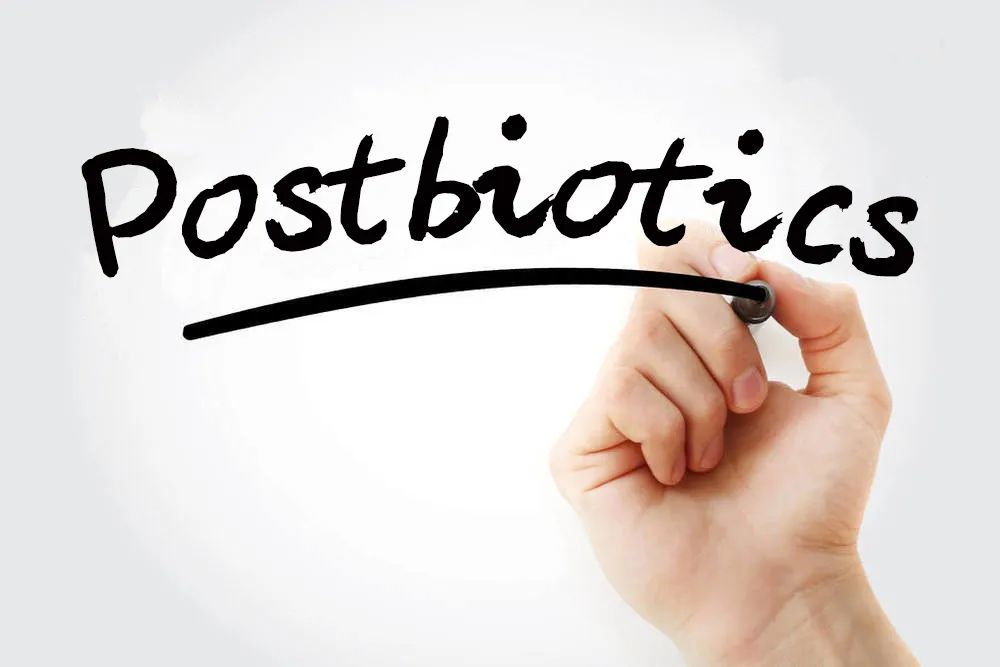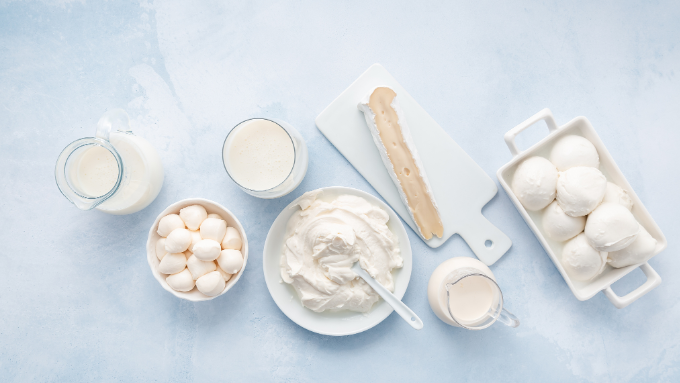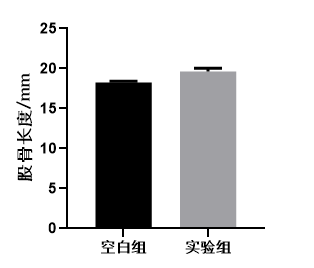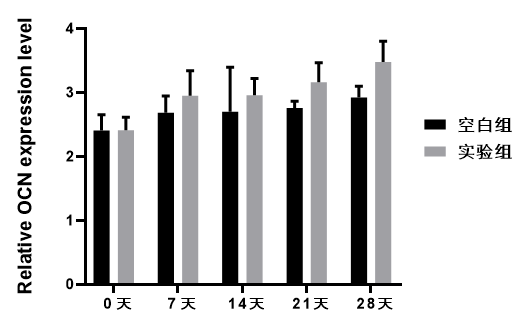- All
- Product Management
- News
- Introduction
- Enterprise outlets
- FAQ
- Enterprise Video
- Enterprise Atlas
Postbiotics and Bone Health
When mentioning the hottest health industry track at present, 'postbiotics' should be considered one.Postbioticsare products made from inactivated microorganisms and/or microbial components with a clear genetic background that are beneficial to host health, including or excluding their metabolites, chemical synthetic components, and excluding viruses/bacteriophages and their products. In simple terms, postbiotics are a collective term for the beneficial components of probiotics after inactivation processing. Compared to traditional live probiotics, postbiotics do not have the limitations of activity and retain a large amount of nutrients and effective components (such as vitamins, fats, proteins, polysaccharides, organic acids, microbial components, etc.). Due to their higher safety and stability, and advantages in storage and production, they have attracted widespread attention in the food and health industries since their introduction, and their popularity is increasing day by day, making them a new trend in the industry. Currently, research on postbiotics mainly focuses on their active components and probiotic functions.The gut microbiota interacts with the host in aspects such as food digestion, energy utilization, mineral absorption, vitamin supply, and immune regulation, thereby affecting the host's bone metabolism. Numerous animal experiments have proven that probiotics (including lactic acid bacteria, Bifidobacterium animalis subsp., Lactobacillus plantarum, Lactobacillus helveticus, etc.) can influence calcium absorption through pathways such as synthesizing vitamins, regulating intestinal pH, bile acid metabolism, and immune regulation, thereby affecting bone metabolism.Existing research has found that the immune regulatory activity of postbiotics produced by inactivated probiotics is higher than that of probiotics.

Research by Montazeri-Najafabady et al. shows that various postbiotics can significantly increase the host's overall bone mineral density (BMD).Moreover, postbiotics have probiotic functions that promote osteoblast differentiation and inhibit osteoclast formation, thereby alleviating osteoporosis.Currently, probiotics are becoming a major tool for various consumer brands to break through market barriers. However, due to the physicochemical properties of certain foods (acidity, water activity, specific chemical substances) or storage conditions (moisture, temperature, packaging permeability to oxygen, shelf life), the normal survival of probiotics in food may be threatened during production and storage.How to maintain the survival ability and stability of the microbial community during production, transportation, and storage, ultimately extending the shelf life of live bacterial products, has become the biggest obstacle faced by the probiotic industry in recent years.Existing research has found that the immune regulatory activity of postbiotics produced by inactivated probiotics is higher than that of probiotics.
Compared to probiotics, postbiotics have advantages such as greater stability, longer shelf life, and better environmental tolerance. Probiotics may pose risks of allergies and abnormal translocation into the bloodstream for immature newborns and children, and may also interfere with the establishment of their early normal intestinal microecology.Postbiotics are relatively safe alternatives that can improve some adverse reactions that live probiotics may cause in the body.Currently, the application of probiotics in bone health has achieved a good market foundation, but research on the effects of postbiotics on bone growth and the development of products that promote bone growth is still in its infancy both domestically and internationally. Existing research has found that postbiotics can inhibit osteoclast formation and promote osteoblast differentiation through the gut-immune-bone axis.Currently, the postbiotic research data onLactobacillus mucosae IOB802The gut microbiota interacts with the host in aspects such as food digestion, energy utilization, mineral absorption, vitamin supply, and immune regulation, thereby affecting the host's bone metabolism. Numerous animal experiments have proven that probiotics (including lactic acid bacteria, Bifidobacterium animalis subsp., Lactobacillus plantarum, Lactobacillus helveticus, etc.) can influence calcium absorption through pathways such as synthesizing vitamins, regulating intestinal pH, bile acid metabolism, and immune regulation, thereby affecting bone metabolism.Existing research has found that the immune regulatory activity of postbiotics produced by inactivated probiotics is higher than that of probiotics.

is as follows:1. Length and weight of mouse femursFigure 1 Changes in femur length and weight of mice in different groups
2. Serum OCN levels in miceFigure 2 Changes in serum OCN levels in mice in different groupsOsteocalcin is mainly synthesized by osteoblasts and odontoblasts, with some synthesized by proliferating chondrocytes. It plays an important role in regulating bone calcium metabolism and is a new biochemical marker for studying bone metabolism, having significant diagnostic value for diseases such as osteoporosis syndrome and calcium metabolism disorders. Compared to the blank group, the serum OCN levels increased in mice after intervention with postbiotic powder fermented by Lactobacillus mucosae IOB802.
As research on postbiotics deepens both domestically and internationally, it provides a theoretical basis for the application of postbiotics and offers ideas for developing new products from postbiotic powder fermented by Lactobacillus mucosae IOB802. Given the promoting effects of certain postbiotics on bone growth, as well as their advantages over probiotics in terms of transportation, storage, functionality, and safety, postbiotics have greater development potential and application prospects as functional food ingredients in improving human bone health.Chuangyuan BiotechnologyAs a manufacturer and service provider of postbiotics and postbiotic application solutions in China, it continues to adhere to a scientifically evidence-based research and development philosophy, developing differentiated postbiotic raw materials for use in food production. As the product layout becomes increasingly refined, the company is gradually forming a complete brand line in the fields of microecological preparations and postbiotic applications. In the future, Chuangyuan Biotechnology will continue to innovate technologically, continuously refine product quality, and present truly suitable probiotic 4.0 products for the Chinese constitution to more customers and consumers, jointly empowering the development of postbiotics in China and contributing to national health.[1] Liu Hongxia, Li Xueli, Wu Xiuying, et al. Research progress and application status of postbiotics [J/OL]. Food Science: 1-12.[2] LeBlanc JG, Milani C, de Giori GS, Sesma F, van Sinderen D, Ventura M. Bacteria as vitamin suppliers to their host: a gut microbiota perspective. [J]. Current opinion in biotechnology, 2013, 24(2).
[3] Yu Yang, Zeng Xinfeng, Le Min, et al. Research progress on probiotics regulating animal bone metabolism through the gut-brain axis [J]. China Animal Husbandry Journal, 2021, 57(09): 22-27.

图1 不同组别小鼠股骨长度和骨重变化
2. 小鼠血清OCN含量

图2 不同组别小鼠血清OCN含量变化
骨钙素主要由成骨细胞、成牙质细胞合成,还有一些由增生的软骨细胞合成,在调节骨钙代谢中起重要作用,是研究骨代谢的一项新的生化标志物,对骨质疏松综合征、钙代谢异常等疾病诊断有重要价值。与空白组相比,经发酵粘液乳杆菌IOB802发酵后生元粉干预小鼠后,血清中OCN含量增加。
随着国内外对于后生元研究领域的日益深入,为后生元应用提供了理论依据,同时为开发发酵粘液乳杆菌IOB802发酵后生元粉的新产品提供了思路。鉴于某些后生元对骨生长的促进作用,以及其与益生菌相比,在运输、储存、功能和安全性上的优势,后生元作为功能性食品原料,在改善人类骨骼健康方面具有更为突出的开发潜力和应用前景。
创源生物作为国内后生元及后生元应用解决方案的制造商、服务商,持续科学循证的研发理念和思路,开发差异化的后生元原料并应用于食品生产中,随着产品布局日臻完善,企业在微生态制剂、后生元应用领域也逐步形成完整的品牌线。未来,创源生物将持续进行技术创新,对产品品质不断打磨,以更卓越的产品和更优质的服务,为更多客户和消费者呈现真正适合国人体质的益生菌4.0产品,为中国的后生元发展共同赋能,为国民健康做贡献。
[1]刘红霞,李雪利,吴秀英等.后生元研究进展及应用现状[J/OL].食品科学:1-12.
[2]LeBlanc JG,Milani C,de Giori GS,Sesma F,van Sinderen D,Ventura M. Bacteria as vitamin suppliers to their host: a gut microbiota perspective. [J]. Current opinion in biotechnology,2013,24(2).
[3]余洋,曾新福,乐敏等.益生菌通过肠-脑轴调控动物骨代谢的研究进展[J].中国畜牧杂志,2021,57(09):22-27.
[4] Wang Xin, Xin Yu, Zhang Guofang, et al. Mechanism of action of postbiotics and their application in food [J]. Dairy Products and Humanity, 2023, 129(02): 19-25.
[5] Montazeri Najafabady N, Ghasemi Y, Dabbaghmanesh M H, et al. Exploring the bone sparing effects of postbiotics in the post-menopausal rat model [J]. BMC Complementary Medicine and Therapies, 2021, 21(1): 155.
[6] Johnson C N, Kogut M H, Genovese K, et al. Administration of a postbiotic causes immunomodulatory responses in broiler gut and reduces disease pathogenesis following challenge [J]. Microorganisms, 2019, 7(8): 268.
[7] Shi Jiangmin, Shi Dibang, Xue Yilang, et al. Research progress and application prospects of postbiotics [J]. Journal of Tumor Metabolism and Nutrition, 2022, 9(06): 800-807.
[8] Bhardwaj A, Sapra L, Tiwari A, et al. 'Osteomicrobiology': The Nexus Between Bone and Bugs [J]. Frontiers in Microbiology, 2022, 12, 812466-812466.
Postbiotics, probiotics, bone health, IOB, postbiotic powder
Related News


